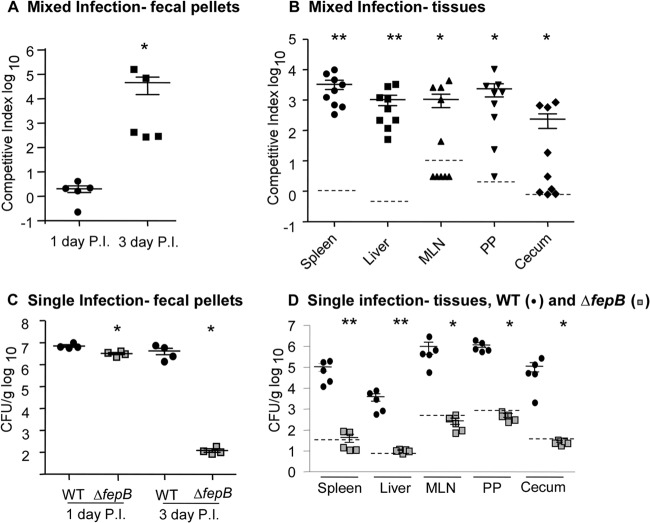Fig 1.
Salmonella requires the FepB ferric iron transporter for persistent infection of Sv129S6 (Nramp1+/+) mice. (A and B) Mice were orogastrically inoculated with a 1:1 mixture of wild-type (WT) and ΔfepB strains. (A) One and 3 days postinfection (P.I.), fecal samples were collected and homogenized to determine bacterial loads. ∗, P = 0.003 compared with the null hypothesis. (B) At 2 weeks, mice were sacrificed, and the spleen, liver, mesenteric lymph nodes (MLN), Peyer's patches (PP), and cecum were immediately homogenized and plated to determine bacterial loads. Dashed lines indicate the limit of detection based on average tissue weight. Each symbol represents one mouse. ∗, P < 0.05; ∗∗, P < 0.00001 compared with the null hypothesis. (C and D) Mice were orogastrically inoculated with the wild-type or ΔfepB strain. (C) One and 3 days postinfection, fecal samples were collected and homogenized to determine bacterial loads in the intestine. ∗, P = 0.03 versus the wild type. (D) After 2 weeks, mice were sacrificed, and the spleen, liver, mesenteric lymph nodes, Peyer's patches, and cecum were immediately homogenized and plated to determine bacterial loads. Each symbol represents one mouse (n = 5). ∗, P < 0.05; ∗∗, P < 0.001 versus the wild type for each organ. Dashed lines indicate the limit of detection based on average tissue weight.

